Instruction
The most overlooked, yet crucial factor in shot selection
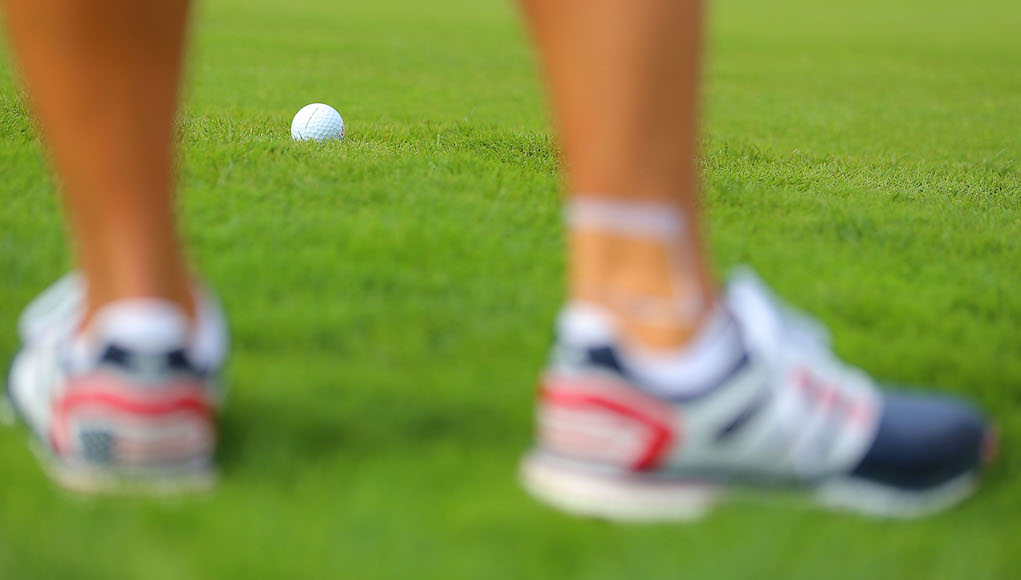
If you’re not analyzing how your golf ball lies in the grass before every shot, you’re costing yourself strokes.
All too often I see amateurs walk up to a shot, get the yardage, pick a club and whack away with little to no regard for how the golf ball is sitting. Good players understand that the lie will influence factors such as shot height, carry distance, spin, landing angle, etc., and it’s something they shouldn’t overlook, even when the ball is in the fairway.
Every golf shot is like solving a problem, and you need to gather all of the information possible to make sure you understand all the variables involved. Analyzing your lie helps you do this. Below, I go through common lies you’ll likely experience in a given round, and how they will effect the golf ball’s flight.
Ball Sitting Up in Fairway
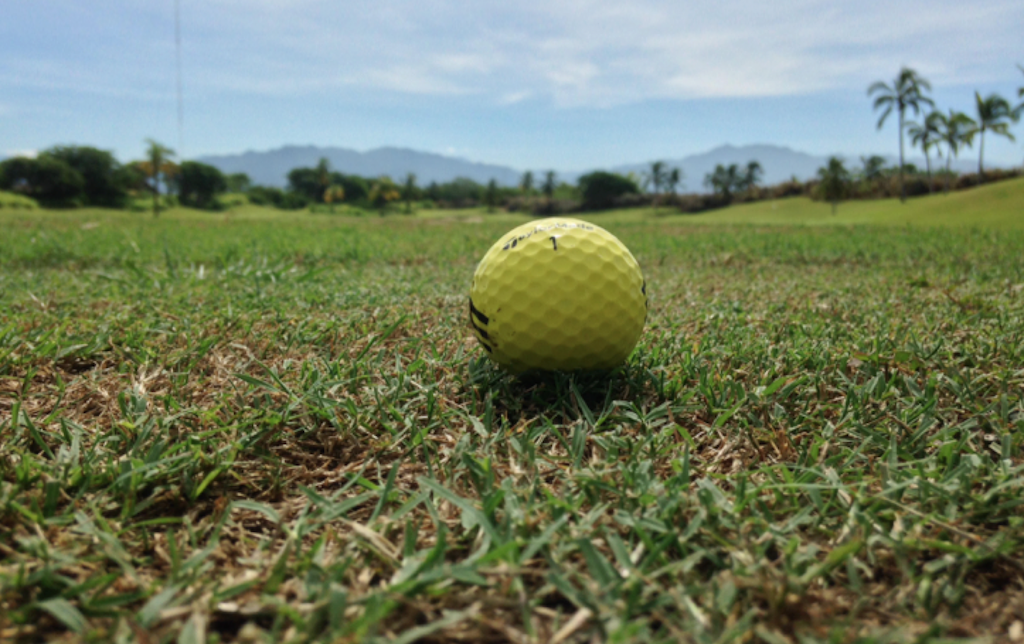
Here’s an example of a great lie in the fairway; it’s one that has the ball sitting “up,” and will allow you to hit nearly any shot you choose. As you can see from the photo, there’s no interference to keep you from striking the shot cleanly, and is most certainly a “go-lie” for a shot with a 3 wood if you carry one.
Related: Why ditching your 3 wood could save you strokes
Watch out for things like grain or imperfections in the turf that could affect lies in the fairway. If the ball is not sitting up, or laying into the grain, don’t try to force a shot that requires a long carry since there’s little room for error. Also, look for things like mud on the ball or divots beneath the ball that may negatively affect the shot.
Ball in First Cut of Rough
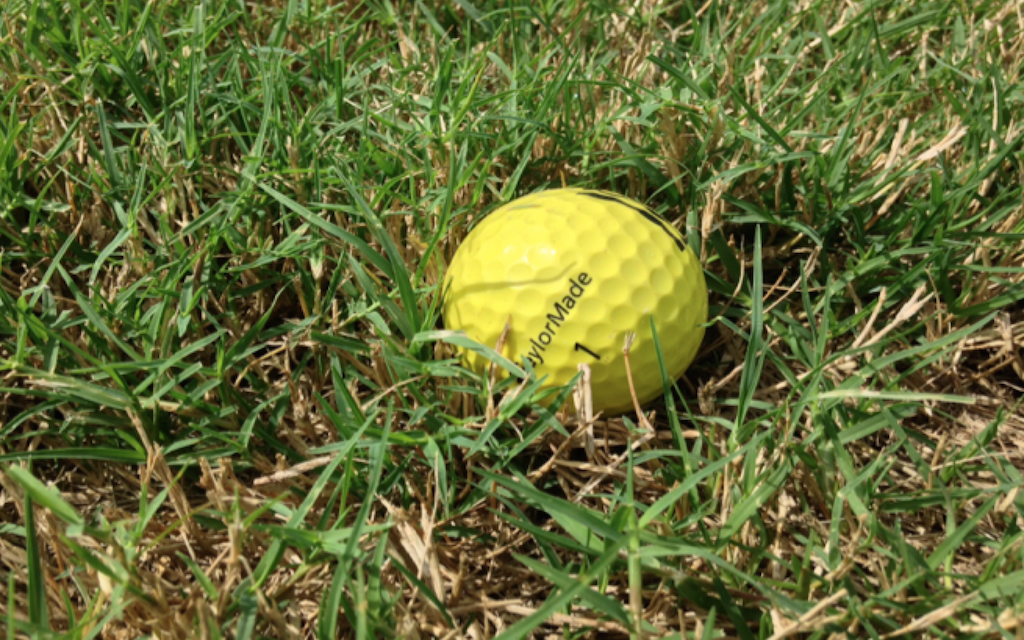
When the ball is resting in the first cut of rough just off the fairway, you must check to see how it settled in the grass. When the ball is sitting down — as you can see here — you must consider the direction in which you are hitting the ball and audit where the deep grass is located.
Let’s pretend you’re hitting this ball toward the top part of the picture. In that case, there is very little grass behind the ball, allowing you to make better contact. You’ll likely be able to hit the club necessary for the shot you plan to hit, but I would not suggest “going for it” on a par-5, or hitting a long approach with danger near the green.
If you were hitting the ball toward the bottom of the photo, on the other hand, you would probably want to change to a higher-lofted club than you would normally hit to help you advance the ball toward the green or down the fairway. It’s one of those times when you simply hit the ball in the incorrect place and you must take your medicine.
If you’re only left with a short shot into the green, I’d suggest aiming to the fat part of the green; it’s not the time to get cute.
Semi or Full-Flyer Lie
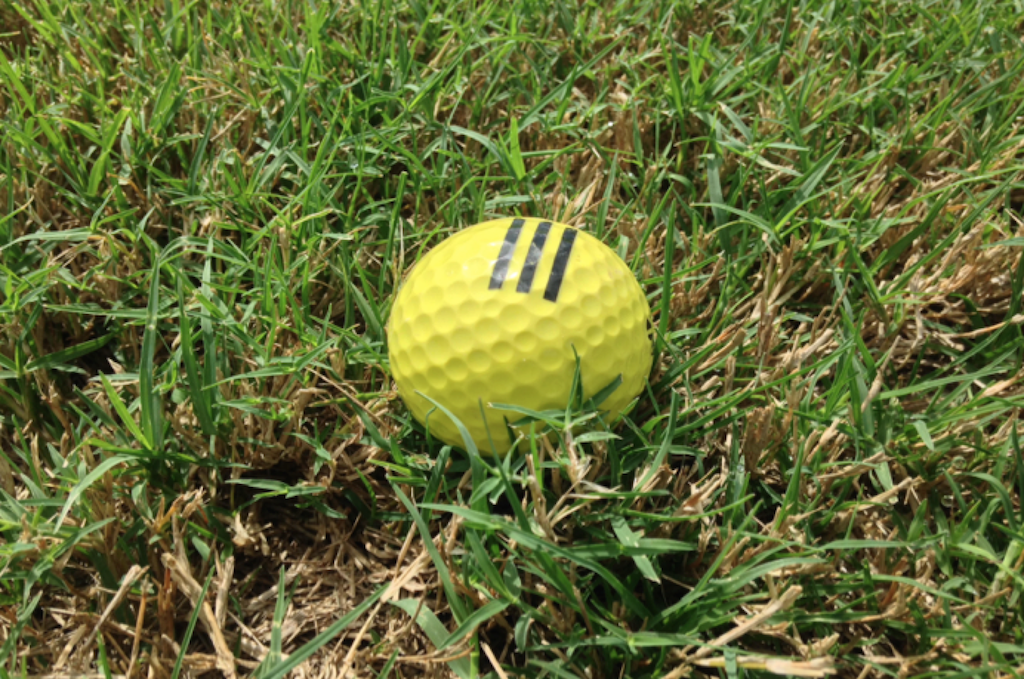
With today’s grooves, the effects of a stereotypical “flyer lie” have been reduced. That being said, however, the ball can still “jump” on you if you don’t pay attention to your lie.
Here you are hitting the ball toward the top portion of the photograph, and you’ll notice a tuft of grass just behind the ball. This clump of grass — especially when it’s wet — will get between the clubface and the ball at impact, and cause the ball to fly with less spin. That’s what causes the ball to “squirt” and land on the green with no chance to stop, or even fly over the green.
It’s this type of lie that people often overlook, but it’s one that the professionals give their utmost attention when there’s trouble over the green.
Hardpan or Tight Lie
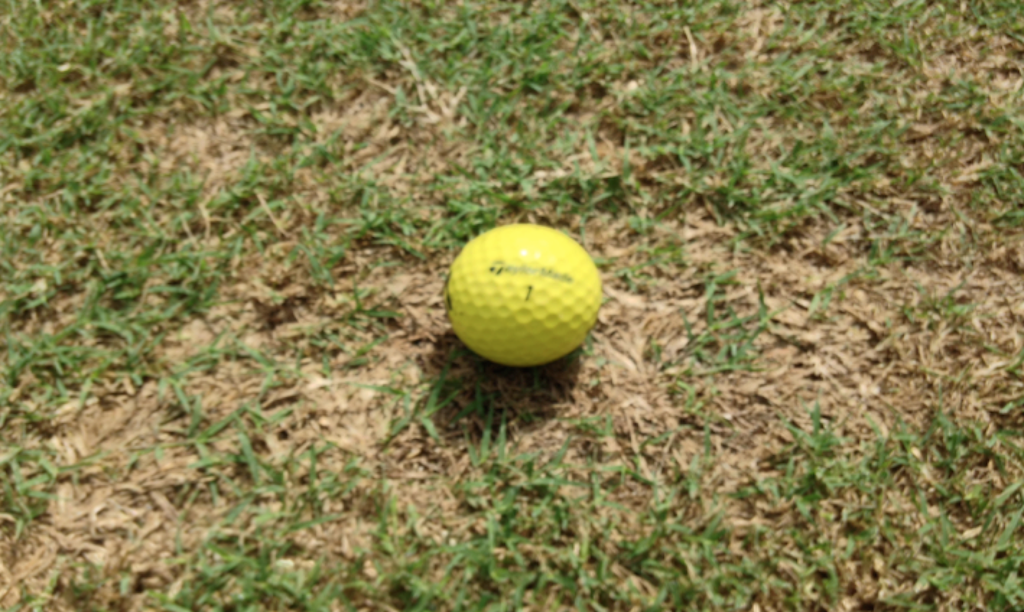
For good players, having no grass around the ball is not a big deal; they’re used to hitting down on the ball. This lie often gives the average player fits, though. Most of the time, the ball comes out low and right for them from this lie. That’s because amateurs often try to help the ball into the air from hardpan or a tight lie, leading to a thin shot that’s hit with an open clubface.
The key to this shot is to make sure you hit down on the ball, allowing the low point of the club to be on the target side. If you make sure this happens, you’ll be able to produce the same shot you can from a perfect lie on the fairway. Remember, commit to the shot, and don’t be scared to take a divot.
The Ultra-Perched Lie
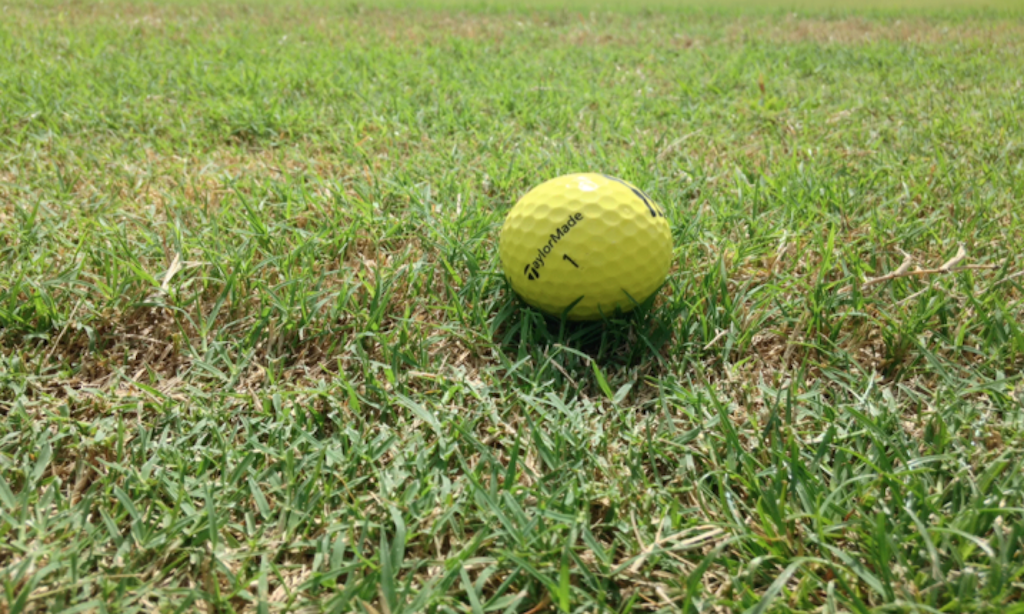
I bet you didn’t think you could have a lie that’s too good. Well, you certainly can.
In the photo above, you can see the ball is perched up in the rough, seemingly just waiting to be hit. The problem is that if you hit down on the ball too much, you can impact the ball too high on the clubface and it will come out “dead.” You’ll lose ball speed on the shot, which will cost you distance.
The key to these types of lies is to SWEEP the ball off the ground — don’t chop down! If you sweep the ball, you will impact the shot on the correct portion of the clubface and the ball will be hit cleanly.
Final thoughts
Lie analysis should become a vital portion of your pre-shot routine on every single shot. It’s up to you as the player to experiment with the different lies and clubs so you’ll be prepared to identify and react to each type of lie you can get. Do your homework.
Next time you hit the range or have some time alone on the golf course, play around from all sorts of lies, grass directions, etc. You’ll become more comfortable at “reading” the lie, dealing with it, and ultimately you’ll cut strokes off your scores.
Here’s to happy experimenting!
- LIKE411
- LEGIT49
- WOW6
- LOL5
- IDHT1
- FLOP2
- OB4
- SHANK12
Instruction
The Wedge Guy: The easiest-to-learn golf basic

My golf learning began with this simple fact – if you don’t have a fundamentally sound hold on the golf club, it is practically impossible for your body to execute a fundamentally sound golf swing. I’m still a big believer that the golf swing is much easier to execute if you begin with the proper hold on the club.
As you might imagine, I come into contact with hundreds of golfers of all skill levels. And it is very rare to see a good player with a bad hold on the golf club. There are some exceptions, for sure, but they are very few and very far between, and they typically have beat so many balls with their poor grip that they’ve found a way to work around it.
The reality of biophysics is that the body moves only in certain ways – and the particulars of the way you hold the golf club can totally prevent a sound swing motion that allows the club to release properly through the impact zone. The wonderful thing is that anyone can learn how to put a fundamentally sound hold on the golf club, and you can practice it anywhere your hands are not otherwise engaged, like watching TV or just sitting and relaxing.
Whether you prefer an overlap, interlock or full-finger (not baseball!) grip on the club, the same fundamentals apply. Here are the major grip faults I see most often, in the order of the frequency:
Mis-aligned hands
By this I mean that the palms of the two hands are not parallel to each other. Too many golfers have a weak left hand and strong right, or vice versa. The easiest way to learn how to hold the club with your palms aligned properly is to grip a plain wooden ruler or yardstick. It forces the hands to align properly and shows you how that feels. If you grip and re-grip a yardstick several times, then grip a club, you’ll see that the learning curve is almost immediate.
The position of the grip in the upper/left hand
I also observe many golfers who have the butt of the grip too far into the heel pad of the upper hand (the left hand for right-handed players). It’s amazing how much easier it is to release the club through the ball if even 1/4-1/2″ of the butt is beyond the left heel pad. Try this yourself to see what I mean. Swing the club freely with just your left hand and notice the difference in its release from when you hold it at the end of the grip, versus gripping down even a half inch.
To help you really understand how this works, go to the range and hit shots with your five-iron gripped down a full inch to make the club the same length as your seven-iron. You will probably see an amazing shot shape difference, and likely not see as much distance loss as you would expect.
Too much lower (right) hand on the club
It seems like almost all golfers of 8-10 handicap or higher have the club too far into the palm of the lower hand, because that feels “good” if you are trying to control the path of the clubhead to the ball. But the golf swing is not an effort to hit at the ball – it is a swing of the club. The proper hold on the club has the grip underneath the pad at the base of the fingers. This will likely feel “weak” to you — like you cannot control the club like that. EXACTLY. You should not be trying to control the club with your lower/master hand.
Gripping too tightly
Nearly all golfers hold the club too tightly, which tenses up the forearms and prevents a proper release of the club through impact. In order for the club to move back and through properly, you must feel that the club is controlled by the last three fingers of the upper hand, and the middle two fingers of the lower hand. If you engage your thumbs and forefingers in “holding” the club, the result will almost always be a grip that is too tight. Try this for yourself. Hold the club in your upper hand only, and squeeze firmly with just the last three fingers, with the forefinger and thumb off the club entirely. You have good control, but your forearms are not tense. Then begin to squeeze down with your thumb and forefinger and observe the tensing of the entire forearm. This is the way we are made, so the key to preventing tenseness in the arms is to hold the club very lightly with the “pinchers” — the thumbs and forefingers.
So, those are what I believe are the four fundamentals of a good grip. Anyone can learn them in their home or office very quickly. There is no easier way to improve your ball striking consistency and add distance than giving more attention to the way you hold the golf club.
More from the Wedge Guy
- The Wedge Guy: Golf mastery begins with your wedge game
- The Wedge Guy: Why golf is 20 times harder than brain surgery
- The Wedge Guy: Musings on the golf ball rollback
- LIKE86
- LEGIT13
- WOW6
- LOL1
- IDHT0
- FLOP4
- OB1
- SHANK8
Instruction
Clement: Stop ripping off your swing with this drill!

Not the dreaded headcover under the armpit drill! As if your body is defective and can’t function by itself! Have you seen how incredible the human machine is with all the incredible feats of agility all kinds of athletes are accomplishing? You think your body is so defective (the good Lord is laughing his head off at you) that it needs a headcover tucked under the armpit so you can swing like T-Rex?
- LIKE0
- LEGIT2
- WOW2
- LOL0
- IDHT0
- FLOP0
- OB0
- SHANK2
Instruction
How a towel can fix your golf swing

This is a classic drill that has been used for decades. However, the world of marketed training aids has grown so much during that time that this simple practice has been virtually forgotten. Because why teach people how to play golf using everyday items when you can create and sell a product that reinforces the same thing? Nevertheless, I am here to give you helpful advice without running to the nearest Edwin Watts or adding something to your Amazon cart.
For the “scoring clubs,” having a solid connection between the arms and body during the swing, especially through impact, is paramount to creating long-lasting consistency. And keeping that connection throughout the swing helps rotate the shoulders more to generate more power to help you hit it farther. So, how does this drill work, and what will your game benefit from it? Well, let’s get into it.
Setup
You can use this for basic chip shots up to complete swings. I use this with every club in my bag, up to a 9 or 8-iron. It’s natural to create incrementally more separation between the arms and body as you progress up the set. So doing this with a high iron or a wood is not recommended.
While you set up to hit a ball, simply tuck the towel underneath both armpits. The length of the towel will determine how tight it will be across your chest but don’t make it so loose that it gets in the way of your vision. After both sides are tucked, make some focused swings, keeping both arms firmly connected to the body during the backswing and follow through. (Note: It’s normal to lose connection on your lead arm during your finishing pose.) When you’re ready, put a ball in the way of those swings and get to work.

Get a Better Shoulder Turn
Many of us struggle to have proper shoulder rotation in our golf swing, especially during long layoffs. Making a swing that is all arms and no shoulders is a surefire way to have less control with wedges and less distance with full swings. Notice how I can get in a similar-looking position in both 60° wedge photos. However, one is weak and uncontrollable, while the other is strong and connected. One allows me to use my larger muscles to create my swing, and one doesn’t. The follow-through is another critical point where having a good connection, as well as solid shoulder rotation, is a must. This drill is great for those who tend to have a “chicken wing” form in their lead arm, which happens when it becomes separated from the body through impact.
In full swings, getting your shoulders to rotate in your golf swing is a great way to reinforce proper weight distribution. If your swing is all arms, it’s much harder to get your weight to naturally shift to the inside part of your trail foot in the backswing. Sure, you could make the mistake of “sliding” to get weight on your back foot, but that doesn’t fix the issue. You must turn into your trial leg to generate power. Additionally, look at the difference in separation between my hands and my head in the 8-iron examples. The green picture has more separation and has my hands lower. This will help me lessen my angle of attack and make it easier to hit the inside part of the golf ball, rather than the over-the-top move that the other picture produces.


Stay Better Connected in the Backswing
When you don’t keep everything in your upper body working as one, getting to a good spot at the top of your swing is very hard to do. It would take impeccable timing along with great hand-eye coordination to hit quality shots with any sort of regularity if the arms are working separately from the body.
Notice in the red pictures of both my 60-degree wedge and 8-iron how high my hands are and the fact you can clearly see my shoulder through the gap in my arms. That has happened because the right arm, just above my elbow, has become totally disconnected from my body. That separation causes me to lift my hands as well as lose some of the extension in my left arm. This has been corrected in the green pictures by using this drill to reinforce that connection. It will also make you focus on keeping the lead arm close to your body as well. Because the moment either one loses that relationship, the towel falls.


Conclusion
I have been diligent this year in finding a few drills that target some of the issues that plague my golf game; either by simply forgetting fundamental things or by coming to terms with the faults that have bitten me my whole career. I have found that having a few drills to fall back on to reinforce certain feelings helps me find my game a little easier, and the “towel drill” is most definitely one of them.
- LIKE12
- LEGIT2
- WOW2
- LOL0
- IDHT0
- FLOP2
- OB0
- SHANK8
-

 19th Hole2 weeks ago
19th Hole2 weeks agoDave Portnoy places monstrous outright bet for the 2024 Masters
-

 19th Hole2 weeks ago
19th Hole2 weeks agoTiger Woods arrives at 2024 Masters equipped with a putter that may surprise you
-

 19th Hole3 weeks ago
19th Hole3 weeks agoReport: Tiger Woods has ‘eliminated sex’ in preparation for the 2024 Masters
-

 19th Hole1 week ago
19th Hole1 week agoTwo star names reportedly blanked Jon Rahm all week at the Masters
-

 19th Hole6 days ago
19th Hole6 days agoReport: LIV Golf identifies latest star name they hope to sign to breakaway tour
-

 19th Hole1 week ago
19th Hole1 week agoNeal Shipley presser ends in awkward fashion after reporter claims Tiger handed him note on 8th fairway
-

 19th Hole5 days ago
19th Hole5 days agoBrandel Chamblee has ‘no doubt’ who started the McIlroy/LIV rumor and why
-

 19th Hole3 weeks ago
19th Hole3 weeks agoAddiction, spinal fusion, and scam artists – Everything Anthony Kim revealed in candid interview with David Feherty















Scott
Oct 24, 2016 at 11:15 am
Really good stuff. Thanks Tom.
Dave r
Oct 21, 2016 at 8:39 pm
Right on Ron you said it best and a good sense of humour got me laughing . You can picture it now all the boys following this would take longer than seconds believe me . How long does it take tour players to get around 18 holes a lot longer than a few seconds a shot.
Still laughing “..”…..????????????????????????????????????
rockflightxl1000
Oct 21, 2016 at 11:59 am
Does this article exist for bunker conditions?
Fred
Oct 21, 2016 at 11:52 am
Whats the top portion of the photo and the bottom of the photo? Thats just confusing.
Pingback: The most overlooked, yet crucial factor in shot selection | Swing Update
Azman Long Hamid
Oct 20, 2016 at 10:13 pm
I think guessing whose legs are those in the picture, is much more interesting. Mu guess is Paula Creamer ?
Seeemples
Oct 20, 2016 at 8:29 pm
I had no idea that so many you idiots overlooked this simple piece of what makes golf so fun. Now I understand why you all been sucking at it
rymail00
Oct 20, 2016 at 8:08 pm
Another great article Tom.
If you get a chance maybe a follow up article on short game shots and analyzing the lie?
Kevin
Oct 20, 2016 at 5:08 pm
Great post. I have been looking for a read like this for a while.
Ron
Oct 20, 2016 at 4:52 pm
Hey, I don’t want to be Johnny Raincloud here, but if I did all the analysis I’m told is necessary on every shot I hit, I’d be playing a 7 hour round and the foursome behind me would tie me to their car bumper on the way home.
It’s all good and correct, but we’re not playing for millions. Hit your ball, get out of the way.
andy c
Oct 20, 2016 at 6:01 pm
I think people duffing bad shot after bad shot out of the rough make play much more slow. 3 bad shots take longer than 1 good one.
Ron
Oct 21, 2016 at 11:35 am
You’d think that, but no. Let me walk up to my ball and inspect the lie. Now let me take a good read on the yardage. I’ll back up my GPS with my laser rangefinder, just to be sure. Wait, there must be a sprinkler head around here too. I should also check the temperature and the humidity to figure out how far my ball will fly in these conditions. And wind… Oh, wind. Which direction? How hard is it coming in? Helping or hurting? Will it accentuate my natural ball flight or help straighten it out?
Now, to strategy. Where is my best miss? What do I want to leave myself? If the pin in a sucker location?
Ok, I have all my information. Which club should I use? Wait. I’ve forgotten how to swing a golf club because I’ve contracted dementia while I’ve been looking at this ball.
Just hit your golf ball and get out of the way. There are other people trying to play.
Rational
Oct 21, 2016 at 11:57 am
A gross exaggeration is the #1 sign you have no point.
It takes a few seconds to look at the lie, a few seconds to find the yardage, and you’re two senses of sight and touch will instantly let you know the wind and where you should be aiming. Don’t blame everyone else because you’re too dense to simply look at a green and figure out that bunkers and pin on the left = don’t miss it left.
But by all means… keep on being the guy who airmails a back to front sloping green with a back pin, blades his pitch completely off the front, and then 4 putts for a snowman. As long as you didn’t take a long time to hit your 8 shots, you’re good!
The Daily GolfWRX Fail
Oct 21, 2016 at 1:12 pm
Ron you forgot the 20 practice swings I have to do before I step up to the ball and the 50 waggles I have to get out of my system before I can actually hit the ball
GregC
Oct 20, 2016 at 2:00 pm
Thanks Tom. I asked for something like this article a couple of weeks back and you came through for me. I thought it was very helpful and brought forth some things I didn’t understand before. I appreciate the visuals!
Tom Stickney
Oct 22, 2016 at 9:32 am
My pleasure
tickle me puswoo
Oct 20, 2016 at 1:57 pm
It’s as if this guy writes his articles directed only at dummies….. ? realise Golfwrx has turned into TMZ but can we at least get some good content…. at least TMZ has fit women to go along with the boring BS…… Come on golfwrx where are the women then?????
Tom Stickney
Oct 20, 2016 at 10:08 pm
You obviously have not read my more in-depth articles using Trackman. Not for the beginners.
tom stickney
Oct 20, 2016 at 1:23 pm
Thanks for the comments…it’s the most forgotten fundamental of “playing” the game in my opinion
Justin
Oct 20, 2016 at 12:23 pm
I’m not sure how many courses actually have deep rough areas these days, but I wish you would have discussed how to hit a ball that is sunken down partially or fully into deep rough. As you stated, the goal of the average player on every second shot is to hit the green, regardless of where there ball ends up because we see the pros do it so often. I think the major key in deep rough is to pick a safe spot on the fairway where you can advance the ball with the smallest chance of ending up in a similar or worse lie again. For example, you shouldn’t aim over a fairway bunker when you have this lie because you can’t assume you’ll make good enough contact to carry the ball over it. Even if your shot has to be hit diagonally or mostly sideways, it’s worth it in the long run to avoid trouble.
Also, I don’t think most average golfers think about what the club face will do through impact on a shot out of deep rough. Setting up with a slightly open stance AND club face will help tremendously in advancing the ball forward on a mostly straight line. The more powerful your swing, the less the grass is going to close the club face, so that needs to be a factor as well.
Again, I’m not sure how often the average golfer faces a deep rough situation, but knowing the best route and setup to get back to safety can keep them from that one blow up hole that ruins a round.
LeeRob
Oct 21, 2016 at 12:56 pm
Best reminder I’ve heard to make the point in your first paragraph is “don’t follow a bad shot with a stupid shot”. I tell myself that whenever I end up in a really challenging lie.
Philip
Oct 20, 2016 at 11:27 am
Cool … I’ll be sure to review these shots and the suggestions. Never did know what a flyer lie was and the perched lie definitely has sucker-punched me many times, especially near the green where I have started chipping with the toe down this season with really good success. The only lie tricky lie that gives me no issues is the hardpan/tight lie – mainly due to always playing it as it lies and for me the ball often lies on little grass or in divots. Really appreciate the lesson, thanks!
Tom
Oct 20, 2016 at 10:59 am
The ol perched or hangin chad lie is my nemesis.
James
Oct 20, 2016 at 10:41 am
This was everything I was hoping it would be when I saw the headline. Great article